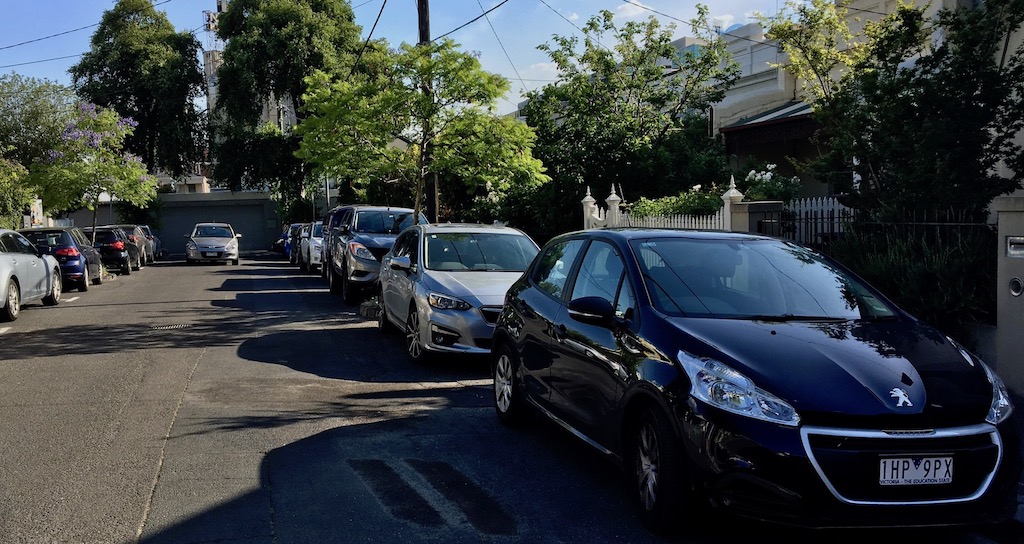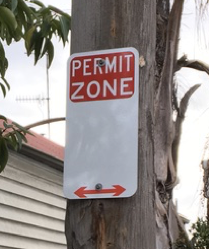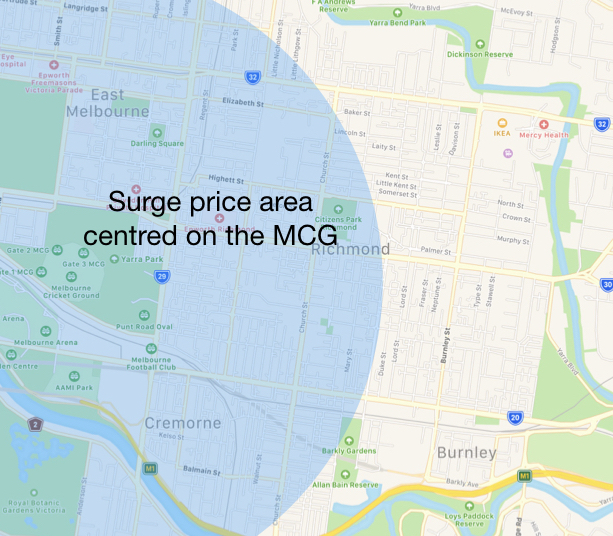Previous articles showed that the City of Yarra is facing a parking crunch; and that we are also subsidising the price of on-street parking by ~ $80m per year. This article describes a way forward – how to introduce the pricing of parking without angering residents, so that the demand for parking can be brought back into balance with supply.

Queuing or pricing
The demand for parking can be managed in two ways – queuing or pricing. At the moment we use queuing – the first people to arrive occupy a parking bay and others have to wait for their turn. If all the bays are occupied then you don’t get one. This is the same method used by communist economies to allocate scarce resources such as bread – people had to line up and when the shop had sold out, you didn’t get any. Dissatisfaction among permit holders shows that this method is no longer acceptable. Even worse, some ratepayers are prevented from even joining the queue – these are members of the new and growing class of “have nots” who are prevented from obtaining parking permits to access public land, our streets.
The alternative is pricing – keep increasing the price until demand reduces to match supply. The concept of pricing has been described in detail by Donald Shoup in his two books, ‘The High Cost of Free Parking’ and ‘Parking and the City’. A free copy of the introductory chapter to ‘Parking and the City’ is available online.
The problem with pricing is that it is radically different from the present solution, i.e. queuing. People are sceptical and would suspect that Council is just trying to increase revenue. We need a way of introducing the concept of pricing without angering residents.
Define a benchmark price
This article proposes that the City of Yarra can introduce the pricing of parking by first establishing a benchmark price that does not negatively impact upon existing permit holders. Once a benchmark price is established, it can be used as justification to gradually increase residential pricing. This will eventually lead to a reduction in demand, or a viable business case for the construction of new off-street parking.
Yarra Online Visitor Permit
A benchmark price can be established by introducing a new visitor parking permit called the ‘Yarra Online Visitor Permit’, able to be purchased online by anyone, including visitors, businesses or commuters; and tied to a vehicle’s registration number; for $10 (daily) / $50 (weekly) / $200 (monthly) / $2,000 (annually). The permit would allow the vehicle to be parked in a residential “permit only” zone.
The City of Yarra can introduce this new permit without taking away any existing permit, or without increasing the price of any existing permit. In contrast, existing permit holders will benefit from the extra services that Council can offer, funded by the increased revenue.
Even better, the City of Yarra can introduce this new permit easily, quickly and cheaply. All it requires is software: a website and app to sell permits, and an app on the smartphone used by parking inspectors, so they can scan the number plate to confirm the vehicle has a permit.
This system can also improve ratepayer satisfaction and reduce callouts for parking inspectors. Instead of calling a parking inspector when they suspect a vehicle is illegally parked, residents could check online, simply by typing in the vehicle registration number, to confirm if a vehicle has paid for a permit for that day.
Gradually eliminate free parking
Once the benchmark price has been established, Yarra can begin to gradually eliminate all free parking. In other words, gradually replace all free, time-limited parking bays with either metered parking bays or residential “permit only” parking zones.

Residential streets will have simple signs stating “Permit Zone” on both sides of the street. To support short term visits, a metered bay can be located at each corner, with the parking sensor sending an alert to parking inspectors if the bay is occupied without payment being made. More metered parking bays can be clustered near shopping streets, to support local traders.
This change will require visitors to pay for parking. The two options will be: pay for metered parking; or pay for a ‘Yarra Online Visitor Permit’ to park in a residential street.
Gradually introduce demand-responsive pricing
Once the concept of “no free parking” has been established and accepted by residents and visitors, Yarra can begin the next step: gradually introduce demand-responsive pricing.
Demand-responsive pricing acts to minimise parking charges while targeting 85% occupancy (i.e. there is usually a free spot on each block). Demand-responsive pricing can’t be corrupted to continually increase revenue – it’s an evidence based system where the occupancy defines the price. It can be applied to both metered parking (price per hour) and to residential permits (price per year).
Metered parking bays can be easily converted to demand-responsive pricing, as has been proven by the SFpark program in San Francisco. In Yarra, the Council would review the occupancy data each month for each cluster of meters, and make a small adjustment to the price if required, e.g. changing the hourly rate by 50 cents.
Demand-responsive pricing for residential annual permits can be introduced slowly, e.g. over several years. With each increase, the new price for residents can be compared with the benchmark, showing how the price for residents is still far lower. Note that the proposed benchmark price of $2,000 per year is still significantly lower than the market rate of ~ $3,000 per year, as shown in Parkopedia, Parkhound or Kerb websites and apps.
With the gradual introduction of demand-responsive pricing, the price for an annual residential permit could increase by $50 per year, taking six years to reach a price close to $365, or $1 per day.
Surge pricing for sporting events
Residents need to be protected from surges in demand for parking, caused by sporting events. For example, residential parking bays near the Melbourne Sporting Precinct (MCG, AAMI Park, Melbourne Park) should be protected from being completely filled by people visiting sporting events. If the residential parking bays are not protected, residents will not be able to find a park, anger will increase, and the benchmark price will not be supported.
The ‘Yarra Online Visitor Permit’ can easily adopt a ‘surge price’ during sporting events, e.g. increasing from $10 per day to $20 per day. The $20 per day fee can be defined to only apply on certain streets at certain times, e.g. near the MCG on game days. The surge price can be clearly advertised during the permit purchase process.

Parking inspectors can easily sweep through the protected areas, scanning license plates and applying the $10 surge price to any vehicle that has only paid for the standard $10 per day fee.
Surge pricing for employment precincts
Similarly, residents need to be protected if they live near employment precincts, such as “Silicon Cremorne”. If the uptake of the Yarra Online Visitor Permit by commuters in a certain area is so high it prevents residents from parking, then a surge price can be applied to the permit in that area.
Access to public land
Introducing the ‘Yarra Online Visitor Permit’ will enable all residents, including the “have nots”, an opportunity to purchase a permit, either for their own car or their visitor’s car. This is a basic issue of access to public land, and will eliminate one of the biggest criticisms of the present system – that new residents can’t even obtain a visitor parking permit for their guests. If a “have not” wishes to obtain a visitor permit for a guest, they’ll be able to pay $10 for the day. Similarly, if a “have not” wishes to obtain a permit for their own car, they’ll be able to pay $2,000 for the year, noting that this is much higher than the $38 per year charged to the “haves”.
Summary
Allocating on-street parking bays by queuing no longer works. Demand is greater than supply, and if the management of parking is not changed, the imbalance will only get worse. Allocating access to parking bays by using pricing, not queuing, is the only realistic way to bring the demand for on-street parking back into balance with supply.
The only realistic way of introducing pricing without angering residents is to first establish a benchmark price, and then to show how proposed price increases are still very minor compared with the benchmark. A benchmark price can be a new ‘Yarra Online Visitor Permit’ offered for $2,000 per year, i.e. much more expensive than the current $38 per year for a residential permit.
Overall, reforming the pricing of parking is possible – it can be done in a way that does not anger residents. The key is to establish a benchmark price.
Originally posted on 14th December 2018 as an article on LinkedIn.
